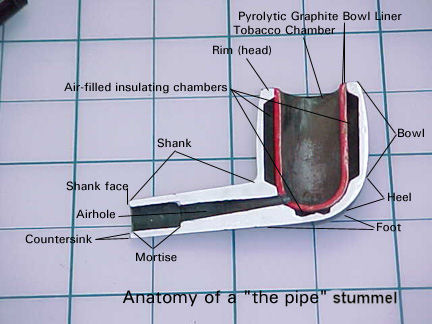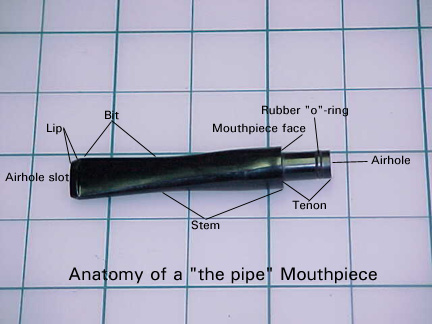The shell of a the pipe was manufactured of compression molded phenolic resin, more commonly known as Bakelite, and even more commonly known as plastic. The bowl was lined with pyrolytic graphite. Here are a couple of diagrams showing the terms used to describe the parts of the pipe. Generally, these terms are applicable to all pipes, the only differences being that pipes made of other materials:
1. develop a "cake" instead of having pyrolytic graphite bowl liners.
2. have no air-filled insulating chambers between the bowl and the cake.
3. have a more pronounced countersink because the mouthpiece has a bevel from the mouthpiece face to the tenon instead of an o-ring seal on the tenon.
The side of the bowl opposite the airhole entrance is the front or face of the pipe, the side of the bowl rising perpendicular to the shank is the back or rear, and the sides are right or left in reference to the pipe held in the smoking position. This illustration shows the interior of a pipe's left side with the right side cut away. By the way, many pipe carvers and smokers refer to the bowl and shank together as a "stummel" and call the airhole the "flue." Also, when the mouthpiece and bowl are assembled by inserting the tenon into the mortise, many pipe aficionados call the shank and mouthpiece together the "stem."

This cutaway of a the pipe stummel provided by millwright Alfred Blankenship.
Originally, the mouthpiece of the pipe was made of nylon, later of Bakelite. Pipes made from other materials may have their mouthpieces made from hard rubber (also called ebonite or vulcanite), Lucite, or, especially meerschaum pipes, amber.
